What's New
Displaying results 3731 - 3740 of 4914

Resource | Publications,
HIV stigma and discrimination adversely affect every aspect of life for people living with HIV and their families. In many settings, an HIV diagnosis still can be as devastating as the illness itself, leading to job loss, school expulsion, violence, social ostracism, loss of property, and denial of health services and emotional support. People living in fear are less likely to adopt preventive behavior, come in for testing, disclose their sero-status to others, access care and adhere to treatment.
At present, the building blocks are in place for scaling up the response to stigma and discrimination. Promising tools and approaches are available. Practitioners know how to inspire change in communities, health care settings and workplaces. There is a core agenda for legal reform to establish better protections for people living with HIV, guarantee their human rights and banish laws that discriminate against people living with HIV.
This brief lays out the rationale for intensified action, and what can—and must—be done to reduce HIV stigma and discrimination worldwide.
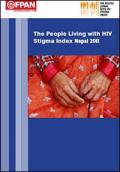
Resource | Publications,
This People Living with HIV Stigma Index study is the first study of this kind that has been conducted on such a comprehensive scale among people living with HIV (PLHIV) in Nepal. HIV and AIDS-related stigma and discrimination exists worldwide and varies only in intensity across countries, communities and individuals. HIV stigma and discrimination together have long been recognized as one of the main obstacles to the prevention, care and treatment of HIV and AIDS.
Stigma remains the primary barrier to public action; on a personal level, it can make individuals reluctant to access HIV testing, treatment and care. The PLHIV stigma index aims to collect information regarding the experiences of PLHIV related to stigma, discrimination, knowledge of their rights and violation of those rights. Currently, over 40 countries across the world, including Nepal, have joined this research.
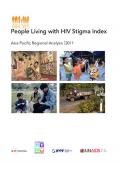
Resource | Publications,
This report provides findings from the rollout of the People Living with HIV Stigma Index (PLHIV Stigma Index) in nine countries in the Asia/Pacific Region (Bangladesh, Cambodia, China, Fiji, Myanmar, Pakistan, Philippines, Sri Lanka, and Thailand). It provides the first large-scale regional comparison of standardised HIV-related stigma indicators. The results represent an extraordinary effort by people living with HIV, PLHIV organisations and supporting domestic and international agencies.
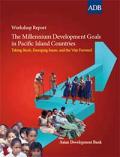
Resource | Publications,
This report provides a regional perspective on the progress made by Pacific island countries (PICs) in achieving the Millennium Development Goals (MDGs). It also discusses the implications of climate change, rising food and fuel prices, the 2008 financial crisis, and emerging trade agreements.
Most PICs face considerable challenges in achieving the MDGs, largely because of stagnant economic growth, a lack of employment opportunities in the formal sector, and the subsistence nature of the informal sector. The Cook Islands, Niue, Palau, Samoa, and Tonga are “on track” toward achieving the MDGs. Fiji, the Marshall Islands, the Federated States of Micronesia (FSM), Solomon Islands, Tuvalu, and Vanuatu are exhibiting “mixed progress” in realizing the goals by 2015. Conversely, Kiribati, Nauru, and Papua New Guinea are “off track” in achieving the MDGs.

Resource | Publications,
In collaboration with various community-based organisations, APN+ conducted a peer-led mixed method research project in six Asian countries to document the range of services available for MSM and transgender people living with HIV and to identify barriers to access and use of these services.
The following report consists of six separate country reports: India, Indonesia, Malaysia, Myanmar, Nepal, and Singapore. Each report has a standard format and can be read independently. A summary of key findings has been included at the end of this section. Summary findings are also provided for each country report for easy reference.
Quantitative survey data forms the background of each country report, both to provide an overview of population demographics and to establish the structural barriers that shape treatment access among communities of MSM in these populations. The statistics give a sense of the size of the problem faced by local communities.
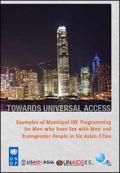
Resource | Publications,
This report describes specific examples of programme activities that seek to address HIV and promote health and rights among MSM and transgender people in six Asian cities: Bangkok, Thailand; Chengdu, China; Ho Chi Minh City, Viet Nam; Jakarta, Indonesia; Manila, the Philippines; and Yangon, Myanmar.
These examples, identified through consultation with local HIV leaders and practitioners in those six cities, are presented here to inform planning, design, and delivery of health and community services at the municipal level.
Ultimately, these types of activities, if widely adopted and scaled up in combination, would lead to a reduction in rates of HIV infection, improve access to health services, and reduce human rights violations in urban areas and cities in the Asia-Pacific region.
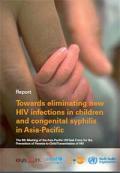
Resource | Publications,
The HIV epidemic in Asia-Pacific is growing rapidly, although most countries have low HIV prevalence while some have concentrated epidemics. AIDS is increasingly feminized through intimate partners’ transmission with gradual increase of new HIV infections among low-risk women and consequent mother-to-child transmission. In 2008, an estimated 1.4 million women and 161,000 children aged 14 years and under were infected with HIV in the region. The estimated number of HIV-positive pregnant women was 85,000. New infections in children totalled 19,700, while 11,700 children died of causes related to AIDS.
Several regional initiatives have been made to address these issues, including a recent focus on eliminating new HIV infections in children and congenital syphilis. On 25 November 2010, UNICEF, WHO, UNAIDS and UNFPA, with support from over 150 delegates from 20 countries across Asia-Pacific, adopted the historic goal of eliminating all new paediatric HIV and CS infections in the region by 2015. The declaration of elimination as an aim by the Asia-Pacific UN PPTCT Task Force represents a paradigm shift in the response to HIV & AIDS and CS. Previously, agencies and health care providers had been working to prevent as many new infections as possible, with growing success but still with enormous gaps to be filled.
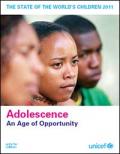
Resource | Publications,
Today, 1.2 billion adolescents stand at the challenging crossroads between childhood and the adult world. Nine out of ten of these young people live in the developing world and face especially profound challenges, from obtaining an education to simply staying alive – challenges that are even more magnified for girls and young women.
In the global effort to save children’s lives, we hear too little about adolescence. Given the magnitude of the threats to children under the age of five, it makes sense to focus investment there – and that attention has produced stunning success. In the last 20 years, the number of children under five dying every day from preventable causes has been cut by one third, from 34,000 in 1990 to around 22,000 in 2009.
This report catalogues, in heart-wrenching detail, the array of dangers adolescents face: the injuries that kill 400,000 of them each year; early pregnancy and childbirth, a primary cause of death for teenage girls; the pressures that keep 70 million adolescents out of school; exploitation, violent conflict and the worst kind of abuse at the hands of adults.
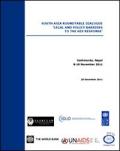
Resource | Publications,
The South Asian Roundtable was a joint initiative of SAARCLAW, the International Development Law Organization (IDLO), the World Bank, United Nations Development Program (UNDP) and the Joint United Nations Programme on HIV/AIDS (UNAIDS); under an overarching goal to promote a legal enabling environment and strengthen the legal response to HIV in South Asia.
The Roundtable was designed to build an informed and engaged group of legal professionals and advocates committed to leading the legal response to HIV in their home countries. In pursuance of this aim, the Roundtable created a forum for the examination and evaluation of legal and policy barriers to the HIV response in South Asia.
During the course of the Roundtable, the following law and policy issues were identified as key barriers to the HIV response: the criminalization of behaviors of key populations at higher risk of HIV exposure; law enforcement policy and practices; lack of sensitivity, knowledge and awareness by law and justice sector leaders and stakeholders; the gap between black letter law and practice; and the clear need for greater coordination and collaboration within the law and justice sector.
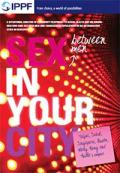
Resource | Publications,
In response to the rapid increase in HIV infections among men who have sex with men (MSM) and transgender people in developed Asia, the International Planned Parenthood Federation (IPPF) launched its ‘Metropolitan Man Initiative’ in 2010 to support civil society organizations in the region to respond to issues related to men's sexual health, including HIV.
This report summarizes key findings from community organizations that provide HIV and sexual health services to the MSM and transgender populations in six metropolitan areas in developed Asia: Kuala Lumpur, Singapore, Hong Kong, Taipei, Seoul and Busan.





